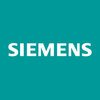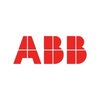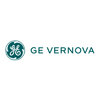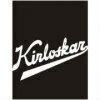Filter interviews by
Power Mech Projects Interview Questions, Process, and Tips
Power Mech Projects Interview Experiences
92 interviews found
I applied via Naukri.com and was interviewed before Jan 2022. There were 4 interview rounds.

(1 Question)
- Q1. Profile verification
(1 Question)
- Q1. Checking of Domain knowledge
(1 Question)
- Q1. Discussion about salary and Preferable Date of Joining
Interview Preparation Tips
I was interviewed before Jan 2021.
Interview Questionnaire
7 Questions
- Q1. How many types prosess elimant
- Ans.
There are several types of process elements in instrumentation.
Process elements in instrumentation include sensors, transmitters, controllers, and final control elements.
Sensors are used to measure physical quantities such as temperature, pressure, flow, and level.
Transmitters convert the sensor signals into standardized electrical signals for further processing.
Controllers receive the signals from transmitters and mak...
- Q2. Why use 4-20 ma why do not 0-20 ma
- Ans.
4-20 mA is commonly used because it allows for a minimum value of 4 mA to indicate a fault condition, while 0-20 mA does not have this capability.
4-20 mA provides a clear indication of a fault condition by having a minimum value of 4 mA.
Using 4-20 mA allows for a wider range of measurement values compared to 0-20 mA.
Many instruments and control systems are designed to work with 4-20 mA signals.
4-20 mA signals are less ...
- Q3. Wich principal thermocouple working
- Ans.
The principal thermocouple working is based on the Seebeck effect.
The Seebeck effect is the phenomenon where a temperature difference between two dissimilar metals or semiconductors generates an electric voltage.
The most commonly used principal thermocouples are Type K, Type J, and Type T.
Type K thermocouples are made of Chromel (Nickel-Chromium) and Alumel (Nickel-Aluminum) wires.
Type J thermocouples are made of Iron ...
- Q4. Wich principal RTD working
- Ans.
RTD works on the principle of change in resistance with temperature.
RTD stands for Resistance Temperature Detector.
RTD works based on the principle that the electrical resistance of a metal changes with temperature.
As the temperature increases, the resistance of the RTD increases.
The change in resistance is measured and converted into temperature using a calibration curve.
RTDs are commonly used in industrial applicatio...
- Q5. How many types loop
- Ans.
There are two types of loops in instrumentation: open loop and closed loop.
Open loop: A control system where the output is not affected by the input.
Closed loop: A control system where the output is affected by the input and feedback is used to make adjustments.
Example: In a temperature control system, an open loop would simply turn on the heater without considering the actual temperature, while a closed loop would mea...
- Q6. What is name of loop
- Ans.
The question is asking for the name of a loop in the context of instrumentation.
The name of the loop could refer to a control loop in a process control system.
It could also refer to a feedback loop in a measurement or control system.
Examples of loop names could be PID loop, cascade loop, or closed-loop system.
- Q7. Why use MOSFET
- Ans.
MOSFETs are used in various applications due to their high switching speed, low power consumption, and compact size.
MOSFETs are commonly used in power electronics for switching applications.
They are used in amplifiers and audio systems for signal amplification.
MOSFETs are used in voltage regulators to maintain a stable output voltage.
They are used in digital circuits for logic gates and memory storage.
MOSFETs are used ...
Interview Preparation Tips
Top Power Mech Projects Senior Instrumentation Technician Interview Questions and Answers
Senior Instrumentation Technician Interview Questions asked at other Companies
I was interviewed before Jan 2021.
Interview Questionnaire
7 Questions
- Q1. How many types prosess elimant
- Ans.
There are several types of process elements in instrumentation.
Process elements in instrumentation can include sensors, transmitters, controllers, and final control elements.
Sensors are used to measure physical quantities such as temperature, pressure, flow, and level.
Transmitters convert the sensor signals into standardized electrical signals for further processing.
Controllers receive the signals from transmitters and...
- Q2. Why use 4-20 ma why do not 0-20 ma
- Ans.
4-20 mA is commonly used because it allows for a minimum value of 4 mA to indicate a fault condition, while 0-20 mA does not have this capability.
4-20 mA provides a clear indication of a fault condition by having a minimum value of 4 mA.
Using 0-20 mA would not allow for a distinct fault indication as 0 mA could be interpreted as a normal operating condition.
4-20 mA is widely accepted and standardized in the industry, m...
- Q3. Wich principal thermocouple working
- Ans.
The principal thermocouple working is based on the Seebeck effect.
The Seebeck effect is the phenomenon where a temperature difference between two dissimilar metals or semiconductors generates an electric voltage.
The voltage generated is proportional to the temperature difference and can be measured to determine the temperature.
Common types of thermocouples include Type K (chromel-alumel), Type J (iron-constantan), and
- Q4. Wich principal RTD working
- Ans.
The principal working of an RTD (Resistance Temperature Detector) is based on the change in electrical resistance with temperature.
RTD works on the principle of the change in electrical resistance of a metal with temperature.
As the temperature increases, the resistance of the RTD also increases.
This change in resistance is measured and used to determine the temperature.
RTDs are commonly made of platinum, nickel, or cop...
- Q5. How many types loop
- Ans.
There are two types of loops in instrumentation: open loop and closed loop.
Open loop: A control system where the output is not affected by the input.
Closed loop: A control system where the output is influenced by the input and feedback is used to maintain desired conditions.
Example: In a temperature control system, an open loop would simply turn on the heater without considering the actual temperature, while a closed l...
- Q6. What is name of loop
- Ans.
The question is asking for the name of a loop in the context of instrumentation.
The name of the loop could refer to a control loop in a process control system.
It could also refer to a feedback loop in a measurement or control system.
Examples of loop names could be PID loop, cascade loop, or closed-loop system.
- Q7. Why use MOSFET
- Ans.
MOSFETs are used in various applications due to their high switching speed, low power consumption, and compact size.
MOSFETs are commonly used in power electronics for switching applications.
They are used in amplifiers and audio equipment for signal amplification.
MOSFETs are used in voltage regulators to control and stabilize voltage levels.
They are used in digital circuits for logic gates and memory storage.
MOSFETs are...
Interview Preparation Tips
Top Power Mech Projects Senior Instrumentation Technician Interview Questions and Answers
Senior Instrumentation Technician Interview Questions asked at other Companies
I applied via Referral and was interviewed in Feb 2021. There were 3 interview rounds.
Interview Questionnaire
4 Questions
- Q1. Question Related to last assignment.
- Q2. How was my last job profile?
- Q3. Willing to relocate?
- Q4. Opportunity for better j9b profile
Interview Preparation Tips
Senior Engineer Interview Questions asked at other Companies
Power Mech Projects interview questions for popular designations
I applied via Referral and was interviewed in May 2021. There were 3 interview rounds.
Interview Questionnaire
1 Question
- Q1. About electrical power systems like Breaker,T/F ,Relays Transmission systems LT,HT lines etc
Interview Preparation Tips
Get interview-ready with Top Power Mech Projects Interview Questions
I applied via Approached by Company and was interviewed before Sep 2021. There were 2 interview rounds.
(1 Question)
- Q1. About ur self regarding your previous work experience
(4 Questions)
- Q1. What is NDT mathod ?
- Ans.
NDT stands for Non-Destructive Testing, a method used to test materials without damaging them.
NDT is used to detect flaws or defects in materials without causing damage.
Common NDT methods include ultrasonic testing, radiography, and magnetic particle inspection.
NDT is used in various industries such as aerospace, automotive, and construction.
NDT helps ensure the safety and reliability of materials and structures.
NDT te...
- Q2. What is NDT acceptance criteria?
- Ans.
NDT acceptance criteria are the standards used to determine if a non-destructive testing method has produced acceptable results.
NDT acceptance criteria vary depending on the type of testing being performed and the industry standards
Acceptance criteria may include factors such as the size and location of defects, the type of material being tested, and the intended use of the product
Examples of NDT acceptance criteria in...
- Q3. What is ASME codes where it is used
- Ans.
ASME codes are a set of standards developed by the American Society of Mechanical Engineers for the design, fabrication, and inspection of mechanical equipment.
ASME codes are used in various industries such as oil and gas, power generation, and manufacturing.
They cover a wide range of topics including pressure vessels, piping systems, boilers, and nuclear components.
ASME codes ensure that equipment is designed and manu...
- Q4. Welder qualification
Interview Preparation Tips
- NDT Inspection
- Hydrotesting
- Pwht
- Material spec
QA QC Engineer Interview Questions asked at other Companies
Jobs at Power Mech Projects
I was interviewed in Dec 2021.
Interview Preparation Tips
Safety Officer Interview Questions asked at other Companies
Interview Questionnaire
1 Question
- Q1. Tell about chiller& AHU
- Ans.
A chiller is a machine that removes heat from a liquid via a vapor-compression or absorption refrigeration cycle. An AHU (Air Handling Unit) is a device used to regulate and circulate air as part of a heating, ventilating, and air-conditioning (HVAC) system.
Chillers are commonly used in commercial and industrial buildings to cool water or other fluids for air conditioning or process cooling.
AHUs are responsible for con...
Top Power Mech Projects Mechanical Engineer Interview Questions and Answers
Mechanical Engineer Interview Questions asked at other Companies
I applied via Company Website and was interviewed in Jan 2021. There was 1 interview round.
Interview Questionnaire
3 Questions
- Q1. #Tell me about your self.
- Ans.
I am a highly motivated and experienced Operation Field Engineer with a strong background in problem-solving and project management.
I have a Bachelor's degree in Engineering and have been working in the field for over 5 years.
I have successfully managed and executed various projects, ensuring timely completion and adherence to quality standards.
I am skilled in troubleshooting and resolving technical issues, both indepe...
- Q2. #BTG interlock and protection.
- Q3. Salary aspection.
Interview Preparation Tips
Interview Questionnaire
2 Questions
- Q1. HSE Policy & Audit reports
- Q2. HSE Documentation & HSE Trainer
Senior HSE Engineer Interview Questions asked at other Companies
Top trending discussions






Power Mech Projects Interview FAQs
The duration of Power Mech Projects interview process can vary, but typically it takes about less than 2 weeks to complete.
Tell us how to improve this page.
Power Mech Projects Interviews By Designations
- Power Mech Projects Electrical Engineer Interview Questions
- Power Mech Projects Engineer Interview Questions
- Power Mech Projects Mechanical Engineer Interview Questions
- Power Mech Projects Senior Engineer Interview Questions
- Power Mech Projects Safety Officer Interview Questions
- Power Mech Projects Assistant Manager Interview Questions
- Power Mech Projects Deputy Manager Interview Questions
- Power Mech Projects Engineer Trainee Interview Questions
- Show more
Interview Questions for Popular Designations
- Mechanical Engineer Interview Questions
- Engineer Interview Questions
- Electrical Engineer Interview Questions
- Senior Engineer Interview Questions
- Senior Executive Interview Questions
- Software Developer Interview Questions
- Intern Interview Questions
- Associate Software Engineer Interview Questions
- Show more
Power Mech Projects Interview Process
based on 92 interviews
Interview experience
Interview Questions from Similar Companies
Fast track your campus placements
Power Mech Projects Reviews and Ratings
based on 1.6k reviews
Rating in categories
|
Senior Engineer
411
salaries
| ₹3 L/yr - ₹8.4 L/yr |
|
Assistant Manager
334
salaries
| ₹4.1 L/yr - ₹10 L/yr |
|
Engineer
273
salaries
| ₹2 L/yr - ₹6.9 L/yr |
|
Mechanical Engineer
242
salaries
| ₹2 L/yr - ₹6.7 L/yr |
|
Electrical Engineer
218
salaries
| ₹2 L/yr - ₹7.5 L/yr |

Thermax Limited
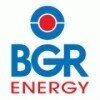
BGR Energy Systems

Larsen & Toubro Limited

Kalpataru Projects International
- Home >
- Interviews >
- Power Mech Projects Interview Questions


